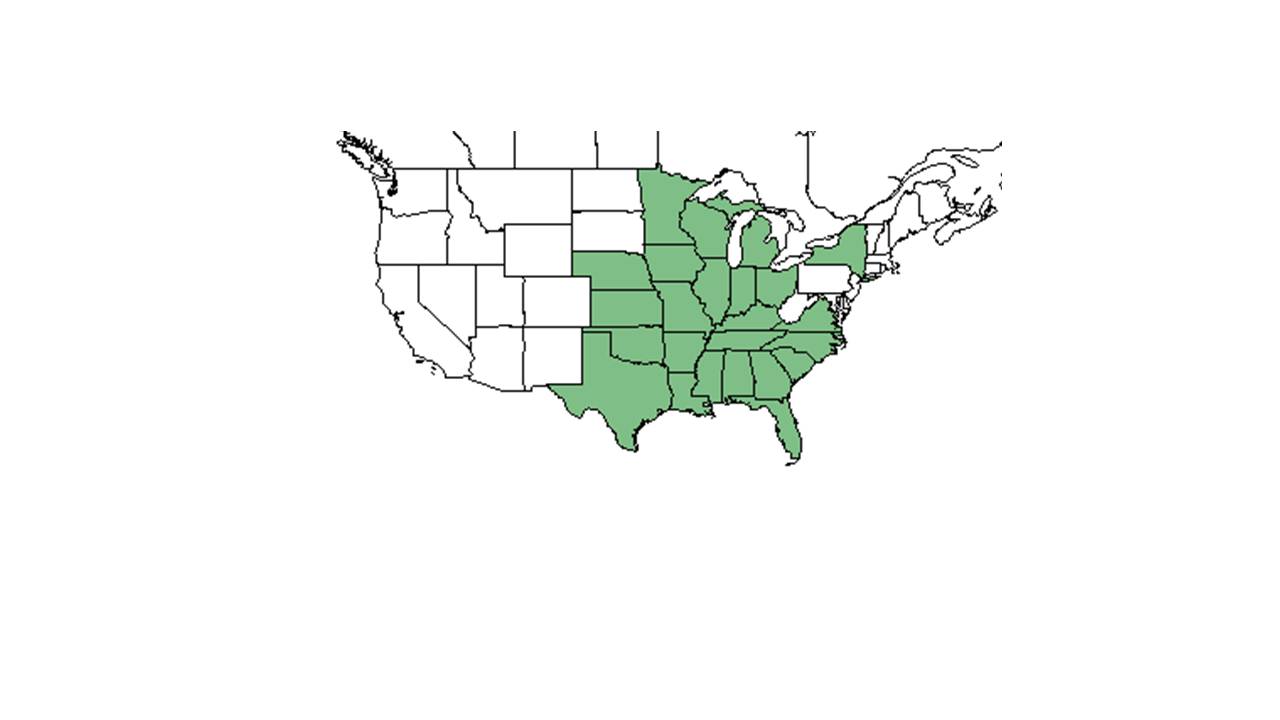Difference between revisions of "Baptisia alba"
Ruthstetler (talk | contribs) (→References and notes) |
Ruthstetler (talk | contribs) |
||
| Line 24: | Line 24: | ||
==Ecology== | ==Ecology== | ||
===Habitat=== <!--Natural communities, human disturbed habitats, topography, hydrology, soils, light, fire regime requirements for removal of competition, etc.--> | ===Habitat=== <!--Natural communities, human disturbed habitats, topography, hydrology, soils, light, fire regime requirements for removal of competition, etc.--> | ||
| + | ''Baptisia alba'' is found in pine flatwoods, along the edges of mesic thickets and bottomland woodlands, in open upland pine-hardwood sand ridges, well-drained hardwood hammocks, and open upland woods (FSU Herbarium). It can also be found in some disturbed habitat, namely on moist roadsides and along hiking trails and railways (FSU Herbarium). This species appears in a range of light levels, from shady to sunny, and in mostly sandy soil types such as loamy sand and drying sandy loam (FSU Herbarium). | ||
| + | |||
===Phenology=== <!--Timing off flowering, fruiting, seed dispersal, and environmental triggers. Cite PanFlora website if appropriate: http://www.gilnelson.com/PanFlora/ --> | ===Phenology=== <!--Timing off flowering, fruiting, seed dispersal, and environmental triggers. Cite PanFlora website if appropriate: http://www.gilnelson.com/PanFlora/ --> | ||
===Seed dispersal=== | ===Seed dispersal=== | ||
Revision as of 08:33, 9 July 2015
| Baptisia alba | |
|---|---|

| |
| photo by Gil Nelson | |
| Scientific classification | |
| Kingdom: | Plantae |
| Division: | Magnoliophyta - Flowering plants |
| Class: | Magnoliopsida - Dicotyledons |
| Order: | Fabales |
| Family: | Fabaceae ⁄ Leguminosae |
| Genus: | Baptisia |
| Species: | B. alba |
| Binomial name | |
| Baptisia alba (L.) Farw. | |

| |
| Natural range of Baptisia alba from USDA NRCS Plants Database. | |
Contents
Description
Common Name: white wild indigo
Distribution
Ecology
Habitat
Baptisia alba is found in pine flatwoods, along the edges of mesic thickets and bottomland woodlands, in open upland pine-hardwood sand ridges, well-drained hardwood hammocks, and open upland woods (FSU Herbarium). It can also be found in some disturbed habitat, namely on moist roadsides and along hiking trails and railways (FSU Herbarium). This species appears in a range of light levels, from shady to sunny, and in mostly sandy soil types such as loamy sand and drying sandy loam (FSU Herbarium).
Phenology
Seed dispersal
Seed bank and germination
Fire ecology
Pollination
Use by animals
Diseases and parasites
Conservation and Management
Cultivation and restoration
Photo Gallery
References and notes
Florida State University Robert K. Godfrey Herbarium database. URL: http://herbarium.bio.fsu.edu. Last accessed: June 2014.
Collectors: H. E. Ahles, L. C. Anderson, R. Athey, K. E. Blum, M. B. Brooks, J. R. Burkhalter, A. F. Clewell, D.S. Correll, R. F. Doren, W. H. Duncan, L. R. Fox, J. P. Gillespie, R. K. Godfrey, N. C. Henderson, R. H. Houk, G. R. Knight, R. Komarek, R. Kral, R. L. Lazor, R.S. Leisner, K. MacClendon, A. W. Macias, S. McDaniel, R. Mitchell, G. W. Ramsey, J. D. Ray Jr., L. M. Umbach, and R. L. Wilbur.
States and Counties: Florida: Calhoun, Dixie, Escambia, Gadsden, Jackson, Jefferson, Lafayette, Leon, Madison, Suwannee, Taylor, Wakulla, and Washington. Georgia: Grady, Fannin, Lowndes, Taliaferro, Thomas, and White. Kansas: Franklin. Mississippi: Hancock and Panola. Missouri: Vernon. North Carolina: Stanly. South Carolina: Lancaster, Richland, and Sumter. Texas: Red River.